- 翰林提供学术活动、国际课程、科研项目一站式留学背景提升服务!
- 400 888 0080
AQA A Level Maths: Mechanics复习笔记3.2.4 Connected Bodies - Pulleys
Connected Bodies - Pulleys
What is a pulley (or peg)?
- A pulley is a wheel like device that rotates as a string passes over it allowing motion of any particles attached to the string
- Pulleys allow a (inextensible) string to change its orientation.
- In A level mathematical models, pulleys will always be smooth and light, so there is no friction involved at the pulley and its mass is negligible
- A peg is similar to a pulley but is a fixed point that a particle can be suspended from (like a nail in a wall)
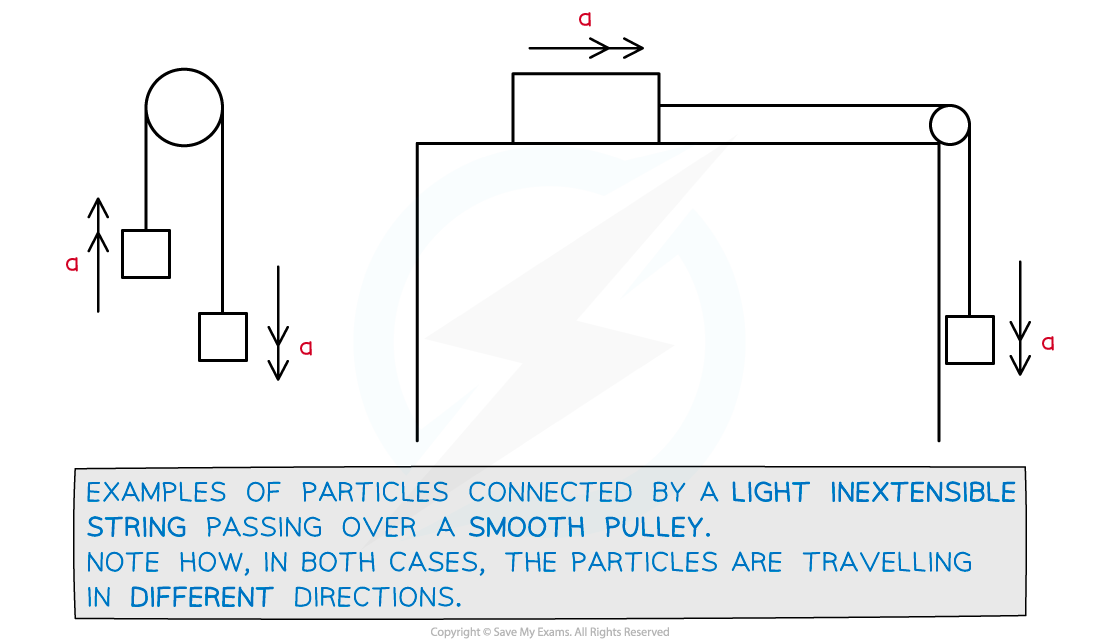
How do I solve pulley questions?
- In all pulley questions the particles are moving in different directions so it is best if they are considered separately as opposed to treating them as one object
- If a particle is in motion in the direction being considered then Newton’s Laws of Motion apply so use “F = ma” (N2L)
- For constant acceleration the ‘suvat’ equations could be involved
- Step 1. Draw a series of diagrams
-
- Label the forces and the positive direction of motion for each particle.
- Colour coding forces acting on each particle may help.
-
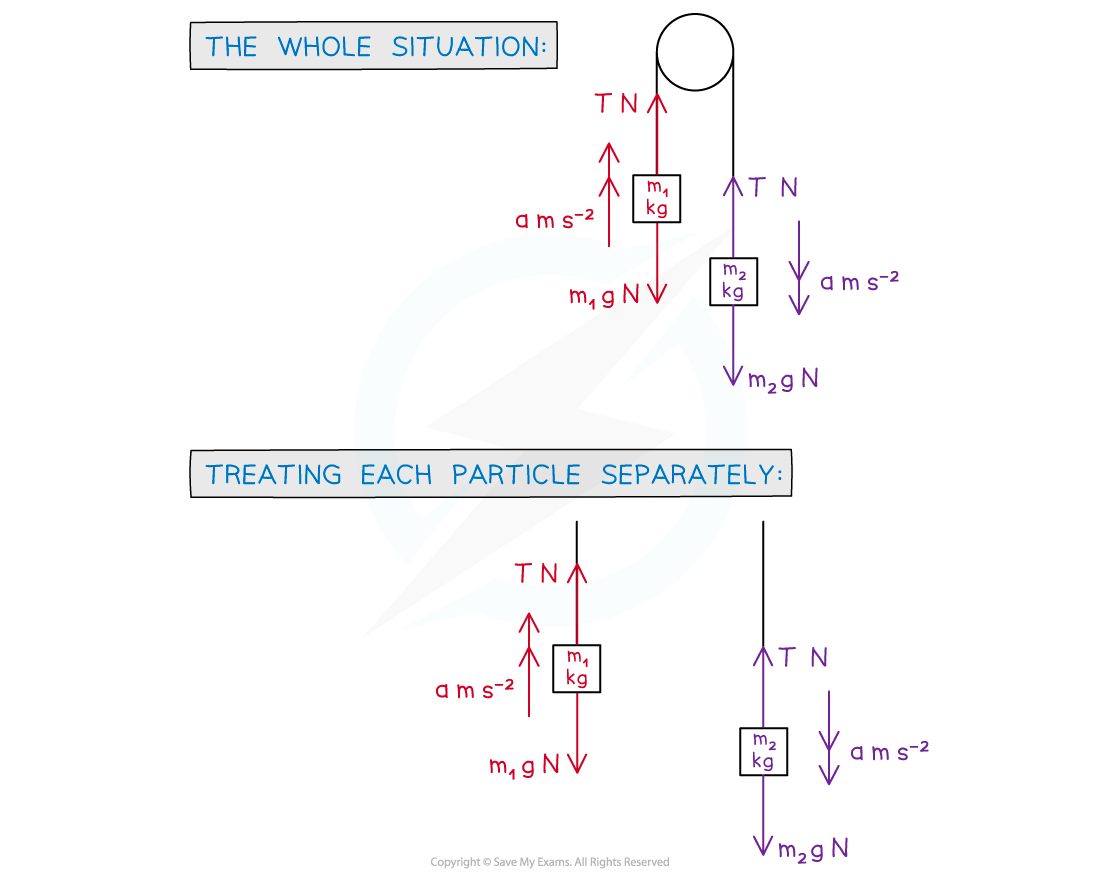
- Step 2. Write equations of motion, using “F = ma"
-
- Equations 1 and 2: Treating each particle separately
-
(↑) T - m1g = m1a
(↓) m2g - T = m2a
- Step 3. Solve the relevant equation(s) and answer the question
-
- Some trickier problems may lead to simultaneous equations
-
Worked Example
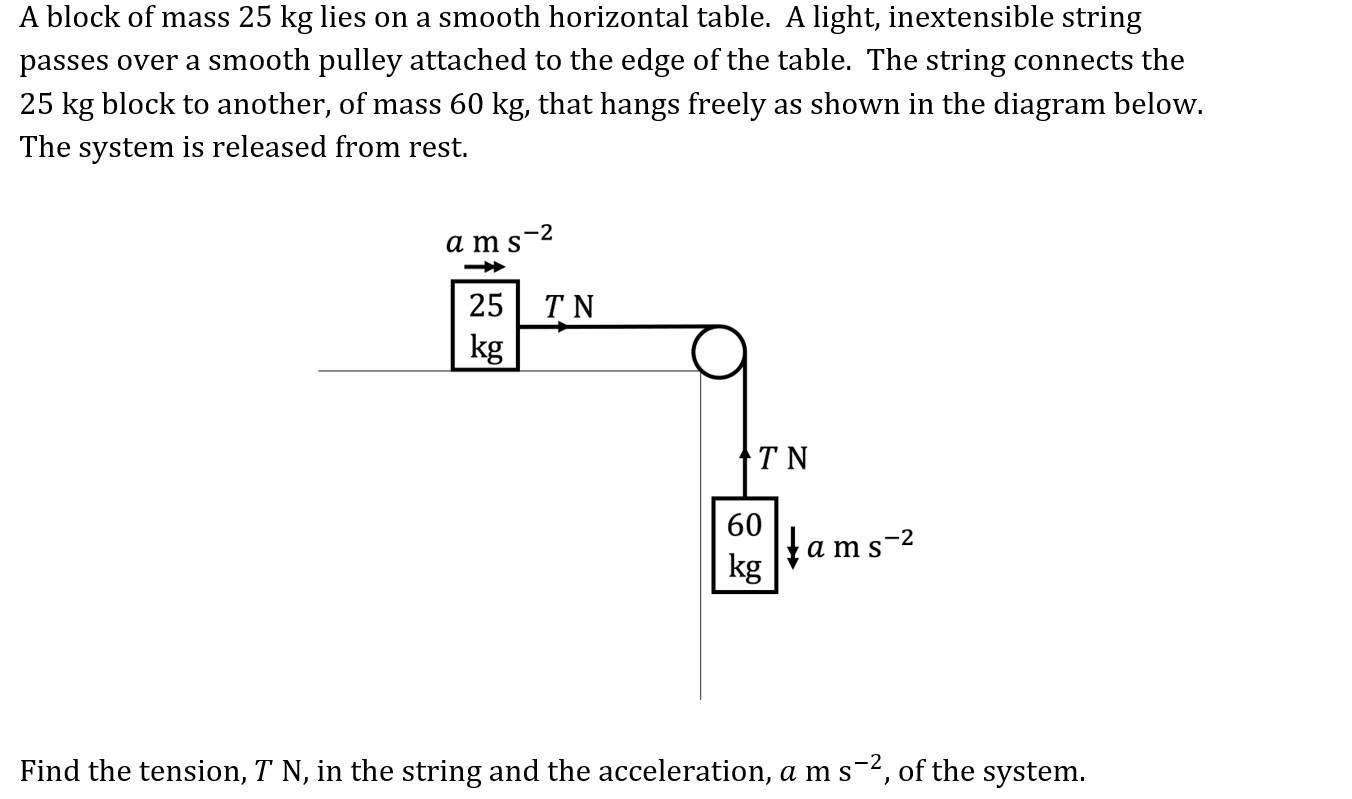
Find the tension, T N , in the string and the acceleration, a m s-2 , of the system.
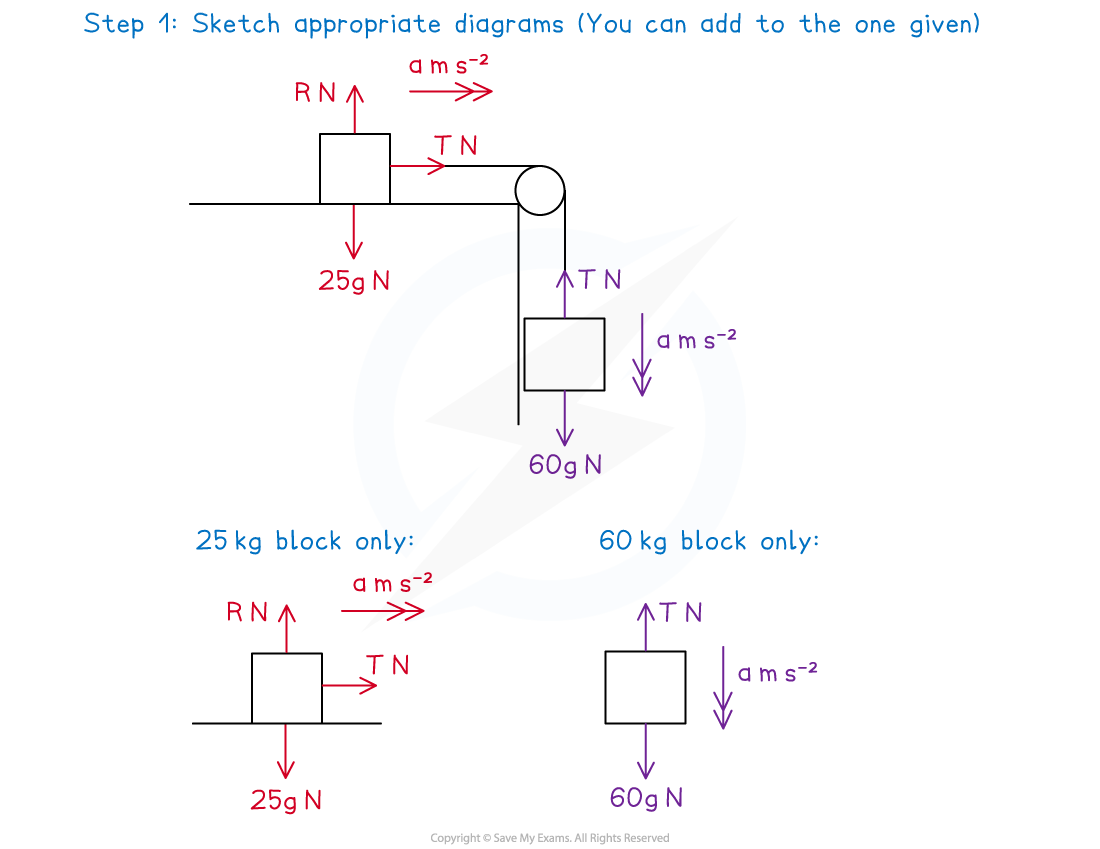
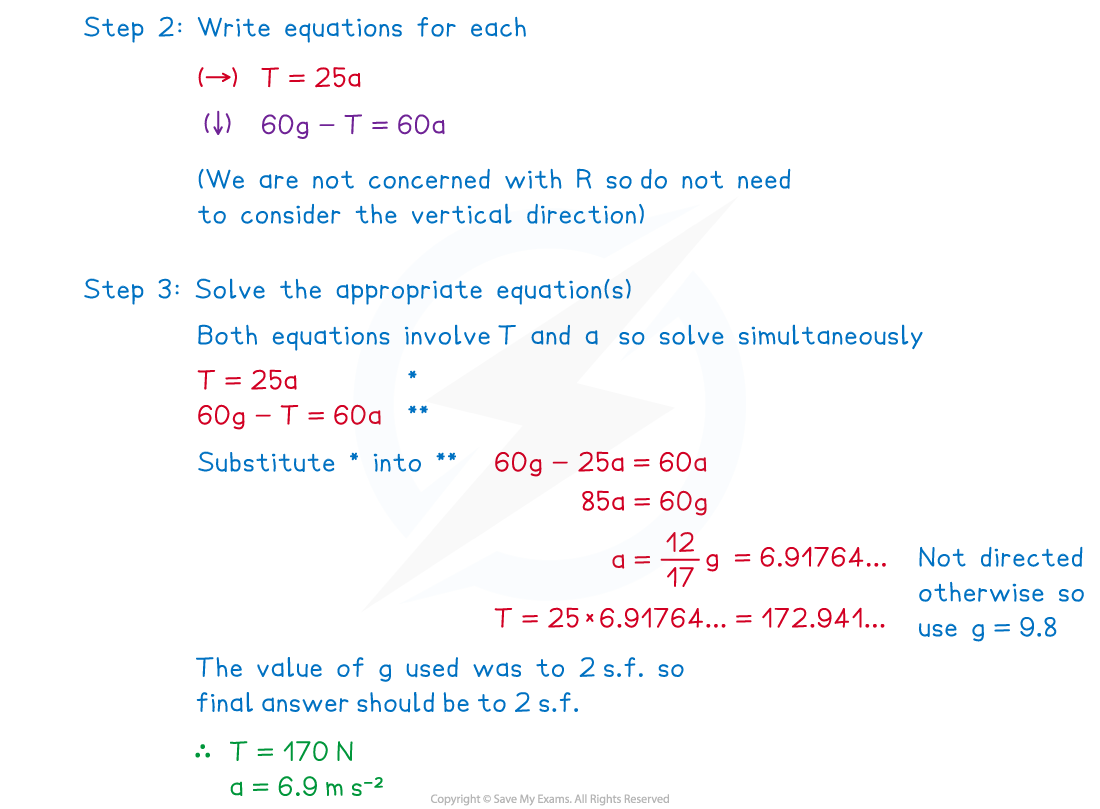
Exam Tip
- Sketch a diagram or add to a diagram given in a question.
- All pulleys are smooth and in most (but not all) the pulley itself can be ignored.
- In pulley questions the particles will be moving in different directions - so each particle will need to be considered separately.
- If one particle is on a horizontal surface (such as a desk or table) then the weight only need be considered if friction is involved (since F = μR and R is related to weight).
- Unless told otherwise, use g = 9.8 m s-2 and round your final answer to two significant figures.
- Some questions may direct you to use g = 10 m s-2 in which case round your final answer to one significant figure.
转载自savemyexams

最新发布
© 2025. All Rights Reserved. 沪ICP备2023009024号-1









